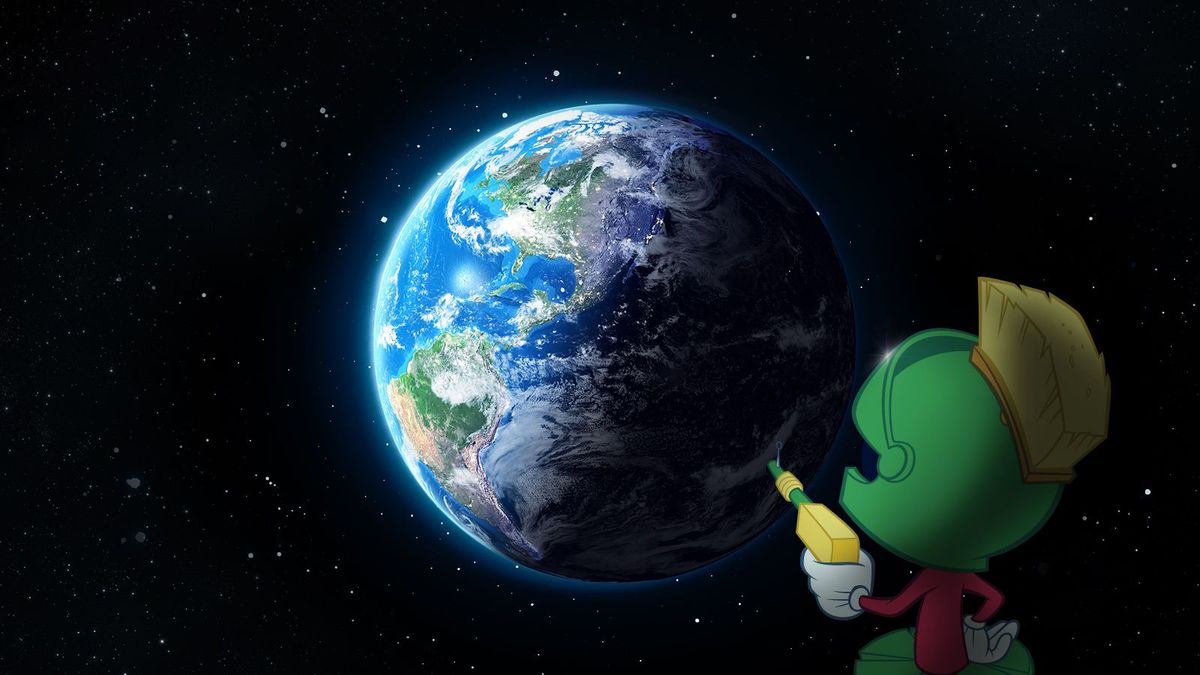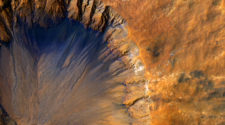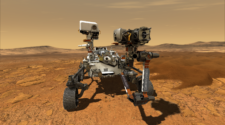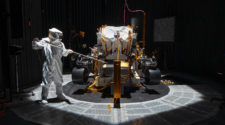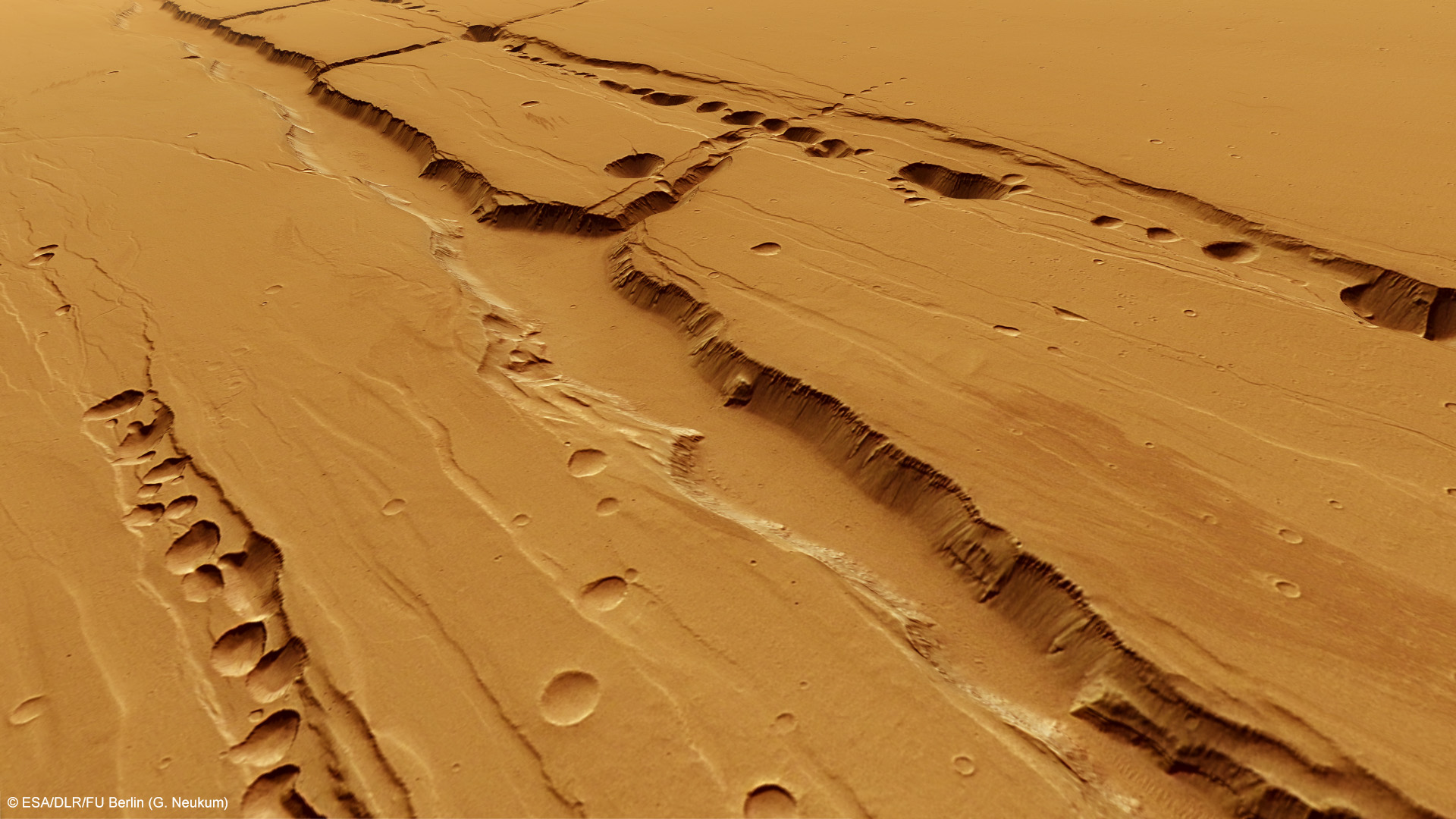
The planet Mars is probably the most studied planet, other than Earth, in our solar system. Like Earth, Mars is a terrestrial planet, as opposed to a gas planet like Jupiter for example. Mars is often referred to as the Red Planet, due to the brownish-red color of its surface caused by iron oxide in the soil. You may be surprised that out of all the planets in our solar system, Mars is just the second largest planet, only eclipsing Mercury in size.
Mars has the fourth furthest orbit away from our sun. Its relative closeness to Earth makes it a popular target for astronomy buffs to view. In fact, Mars has been observed for over 3,000 years. Ancient Egyptian and Chinese astronomers’ records both document observations of the red planet.
History and mythology
To observers before the dawn of the telescope, Mars was nothing more than a bright light in the sky, but unlike many other lights in the sky, it wasn’t always in the same place in the sky and that made it unusual and more easily noticed.
Mars gets its current name from the Roman god of war, however, it went by other names in different cultures.
To the people of ancient China, it was known as the “fire star”, ancient Sumerians believed that Mars was Nergal, the god of war and plague, it was referred to in Mesopotamian texts as the “star of judgment of the fate of the dead”. The Greeks knew it as Ares, their god of war.
The first person to observe Mars through a telescope was Galileo Galilei in 1610.
Mars Fact Sheet
| Size | 0.53 Earths |
| Diameter | 6779 Kilometers |
| Mass | 6.42 × 1023 kg (0.151 Earths) |
| Gravity | 0.375 that of Earth |
| Orbital Period (1 MartianYear) | 687 Earth Days |
| Rotational Period (1 Martian Day) | 24 hours 37 minutes |
| Average Surface Temperature | -81 degrees F |
| Atmosphere’s composition | Mainly Carbon Dioxide |
Cool Mars Facts
Mars has polar ice caps
Other than Earth, Mars is the only other planet in our solar system that has polar ice caps. The northern cap is named the Planum Boreum and the southern cap is named Planum Australe. Under both Martian ice caps, water ice has been found which helps substantiate the possibility of life having existed on the planet at some point.
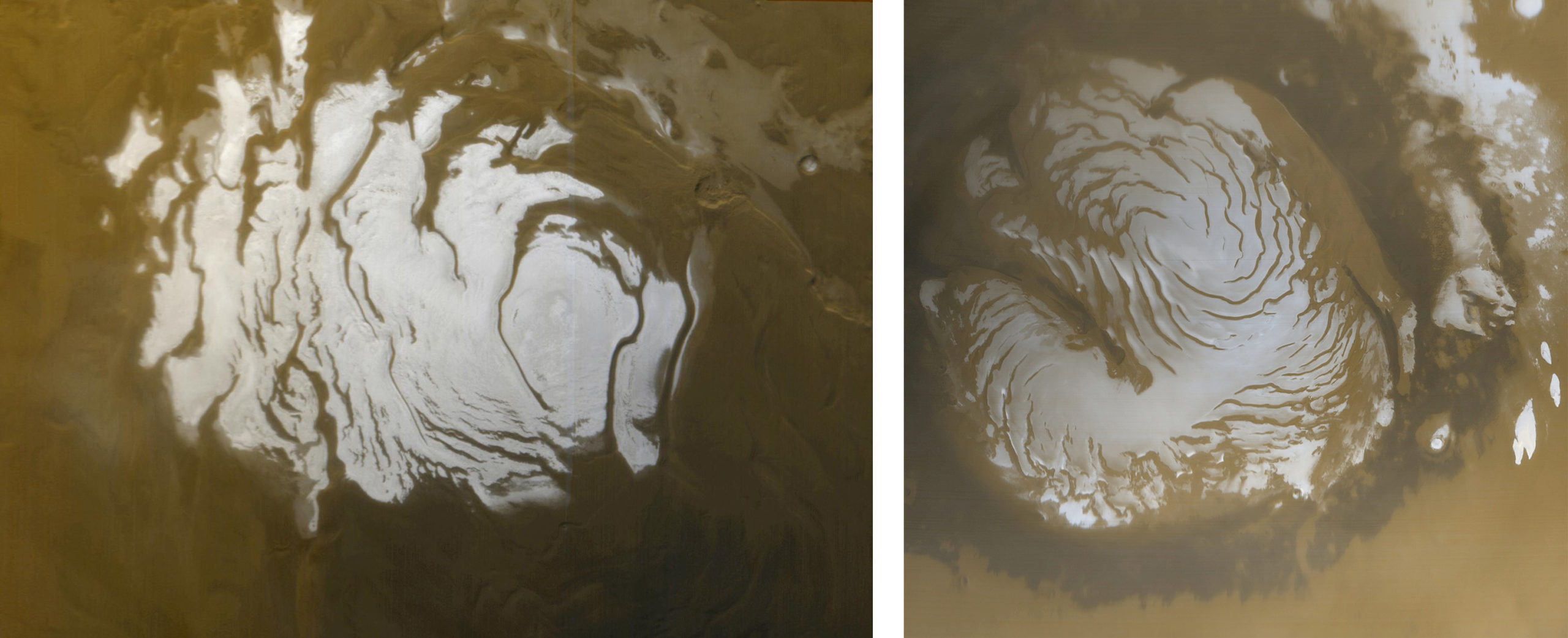
Mars takes the long way around the Sun
Being farther away from our Sun than Earth is means that Mars takes longer to go around the Sun than Earth does, 687 days to be exact. Its orbit is much more elliptical than Earth’s orbit.
Mars has seasons like Earth
Mars is tilted on its axis just like Earth is. Mars’s axis of rotation is tilted 25.2 degrees like Earth which has an axial tilt of 23.4 degrees. This tilt is why we have seasons on Earth and Mars has seasons also. However, on Mars, those seasons last much longer because of the length of time it takes for Mars to orbit the Sun. Since the orbit of Mars is more elliptical, that is egg-shaped, than Earth’s orbit is, it results in the seasons on Mars to vary in length. The shortest season on mars lasts 142 days and the longest lasts 194 days.
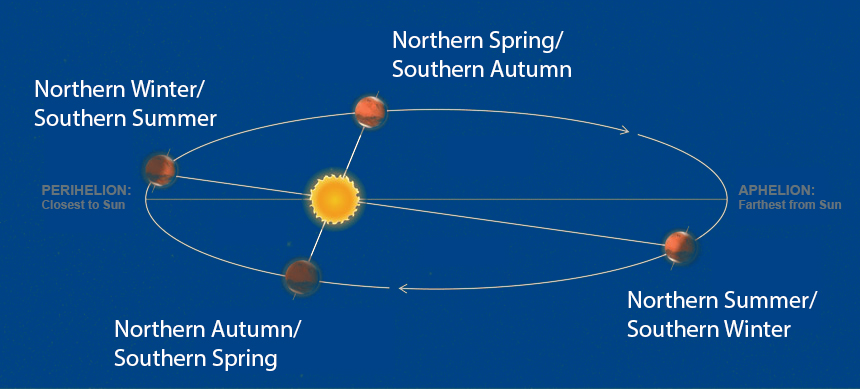
A day on Mars seems just about the same as a day on Earth
While Mars rotates more slowly on its axis than Earth does, a day on Mars lasts only about 41 minutes longer than a Day on Earth does. This is due to the diameter of Mars being about 3,700 miles less than the diameter of Earth.
Double the natural satellites
Mars has two small irregularly shaped moons named Phobos and Deimos. Like Mars, their names are derived from Roman times. According to Roman myth, Mars rode on a chariot pulled by two horses named Phobos (fear) and Deimos (panic). Phobos is the larger of the two, measuring 22.2 Km (13.8 miles) across, while Deimos is just 12.6 km (7.8 Miles. By comparison our Moon is 1,737.5 km (1,079.6 mi) across. While our Moon orbits at an average distance of 384,472 km (238,900 mi) from Earth, Phobos zips around just 6,000 kilometers (3,700 miles) above the Martian surface. Phobos is also getting closer to Mars, closing in at a rate of about 1.8 meters (6 feet) per century, it’s expected to impact the surface of Mars in about 50 million years. It’s possible that after that collision, the debris may form a ring around the planet.
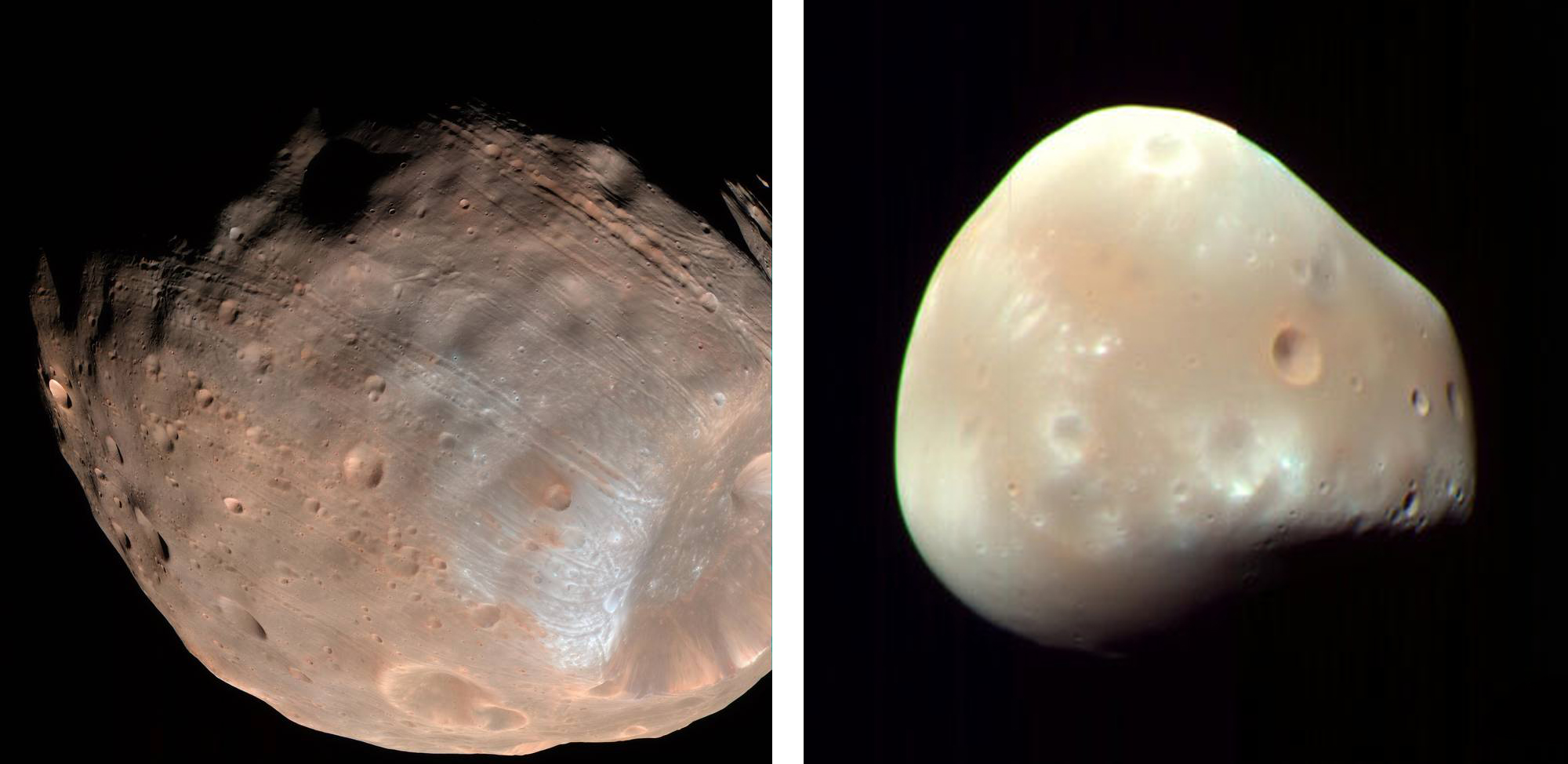
A Mountain climbers dream
Mars has the tallest mountain in the solar system. Olympus Mons is a 25 km (15.5343 mi or 82021Ft ) high shield volcano that formed billions of years ago. Its base is 624 km (374 mi) in diameter. The largest volcano on Earth, Mauna Loa, is 10 km (6.3 mi) high and 120 km (75 mi) across at its base.
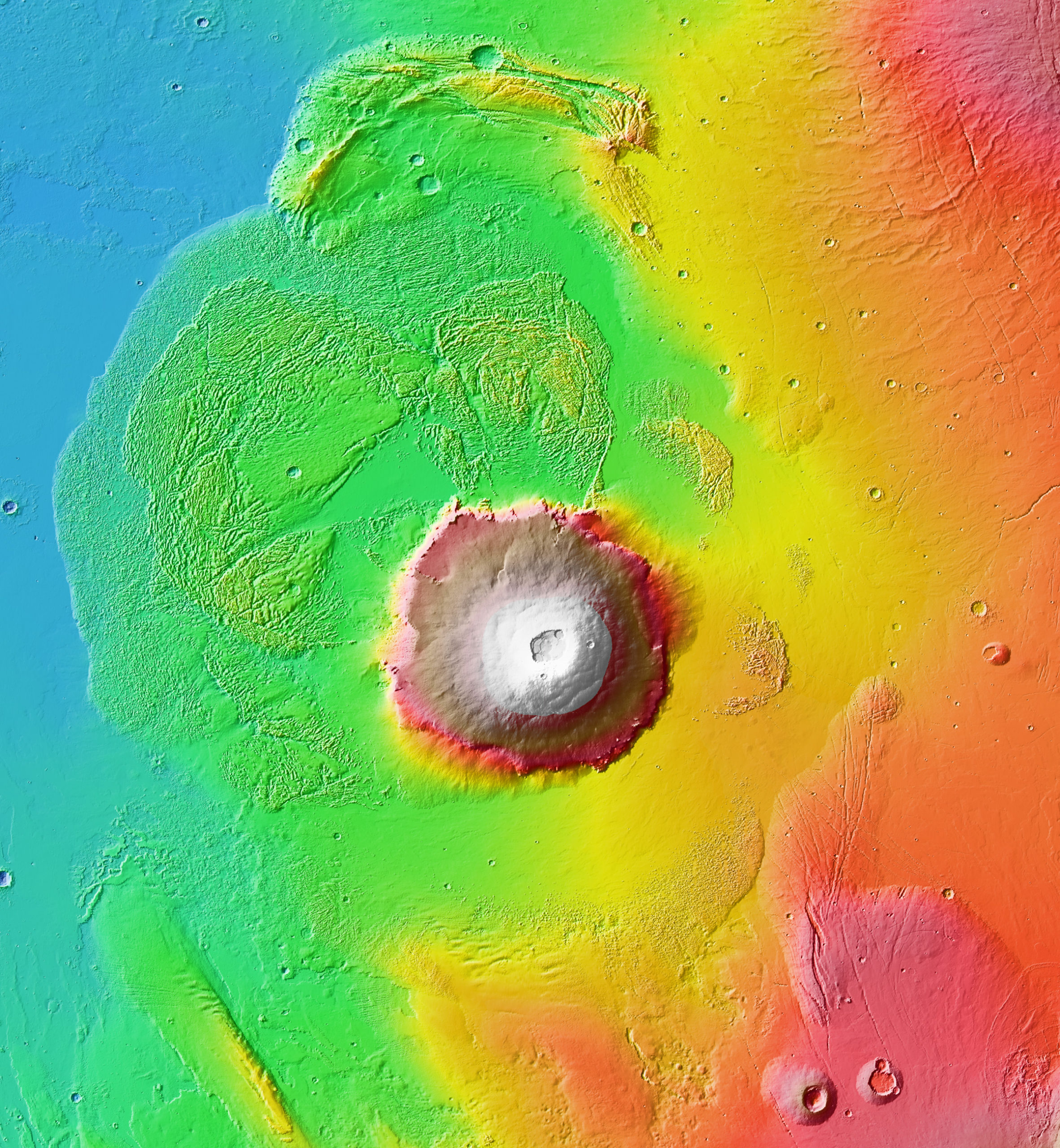
You can jump higher and further
Gravity on Mars is roughly 1/3rd (37.5%) of what it is here on Earth. That would enable you to jump higher and further than here on Earth. You could probably throw a football further than Peyton Manning too!
Getting to Mars is difficult
Mars is a popular target to explore, As of July 15, 2020, a total of 45 missions have been launched, but only 26 have had some level of success. Some were lost during launch, others attempting to orbit the Red Planet, and others attempting to land on it. But those successes have supplied us with astonishing data and images from Mars. Some have astonished both us and the engineers who designed them, such as the Spirit and Opportunity rovers, which launched in 2003 and 2004 respectively on what was first thought to be short 90-day missions for the solar-powered rovers. Amazingly, the Spirit rover operated until 2010 and Opportunity operated until 2019!
Bring your feather duster
Dust storms on the Martian surface can be huge and can last for months, sometimes engulfing the entire planet.
Little green men?
For years it was believed that life existed on Mars. An astronomer named Giovanni Schiaparelli discovered what he thought were straight lines on the surface of Mars in 1877. These lines were too straight to be naturally occurring and it was thought by some that they could only have been artificially created by some sort of intelligent life, possibly canals used for irrigation. Schiaparelli’s telescopes were crude in comparison to today’s and when better telescopes came out it was determined that the lines were not straight at all but just an optical illusion. Sorry, there are no little green men.
